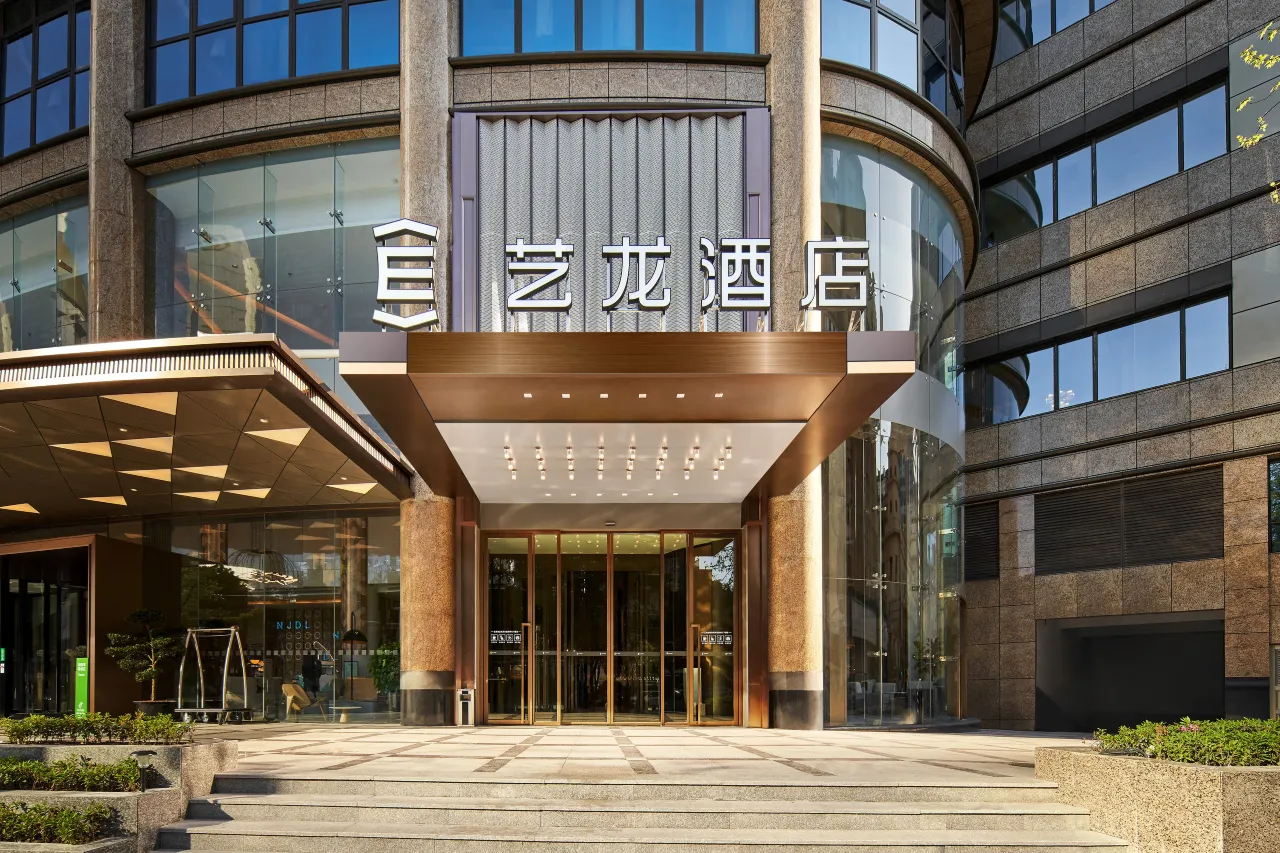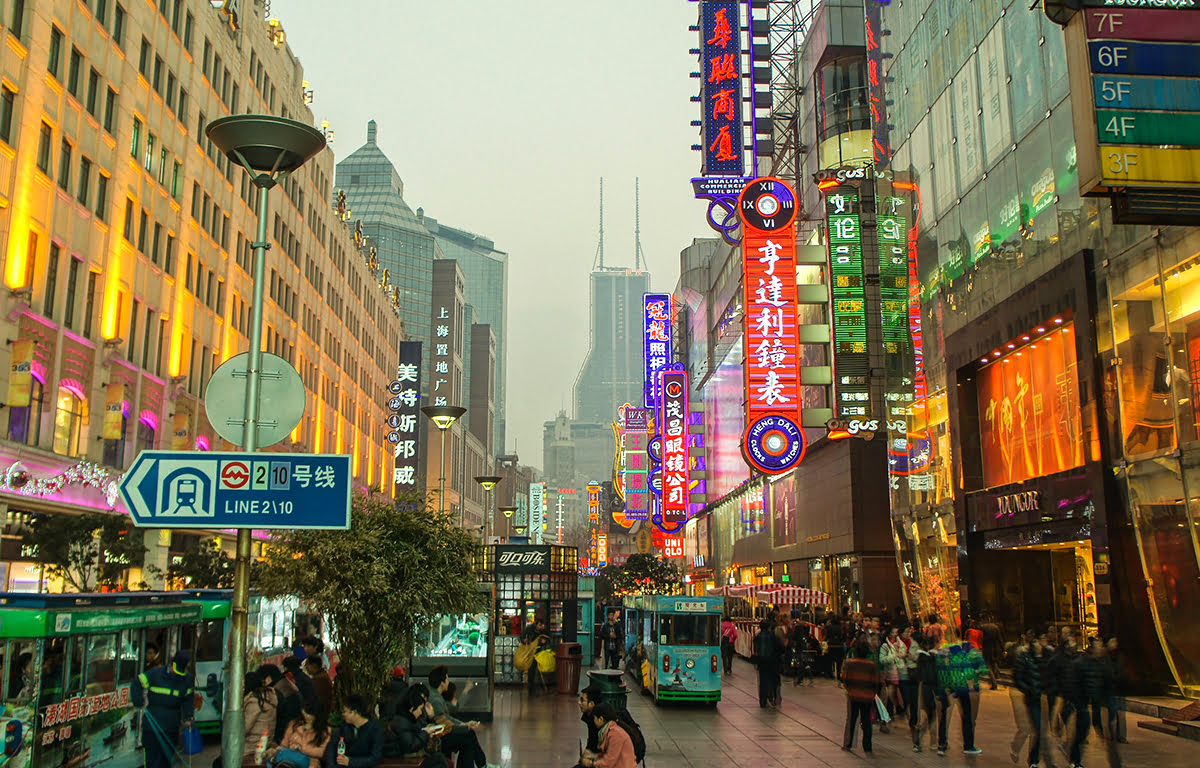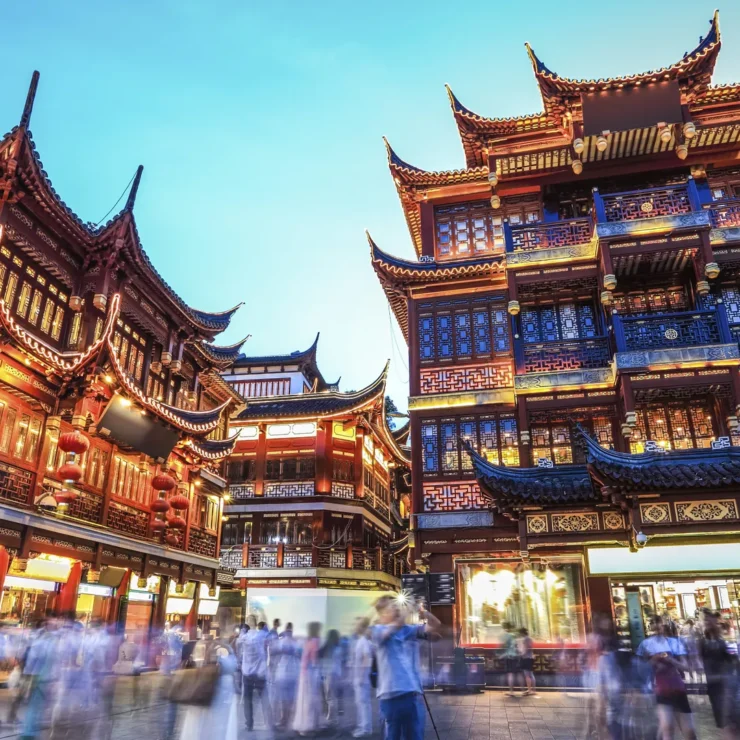中国のきらびやかな大都市、上海といえば、外灘(バンド)、東方明珠塔、南京路の賑やかなショッピング街といった象徴的なランドマークが思い浮かびます。これらの観光スポットは必見ですが、このダイナミックな都市の魅力のほんの一部に過ぎません。よく歩かれている観光ルートの先には、隠れた名所が数多くあります。静かな住宅街、歴史的な街並み、文化の息吹、そして上海の魂に触れるユニークな体験などです。上海の知られざる一面を探求してきた私が、上海の知られざる一面を発見するための詳細なガイドを作成しました。秘密の庭園からアンダーグラウンドのアートシーンまで、忘れられない旅となるであろうスポットを巡りましょう。
上海の隠れた名所を探し求める理由
上海は、未来的な高層ビル群が築100年の石庫門建築の上にそびえ立ち、世界中の文化が伝統的な中国文化と見事に融合する、コントラストの街です。人気の観光スポットは近代性と歴史を体現している一方で、混雑し商業化が進み、旅行者が求める本物で温かみのある雰囲気が欠けている場合もあります。人里離れた場所へ足を踏み入れることで、地元の人々と触れ合い、ガイドブックには載っていない物語を発見し、より親密な上海の体験をすることができます。歴史愛好家、グルメ、アート愛好家、あるいは単に冒険好きな方など、どんな方にも特別な何かを提供してくれる隠れた名所がきっと見つかるでしょう。
1. 田子坊:太康路の芸術と文化の迷路
新天地は復元された石庫門(石門)で注目を集めることが多いですが、フランス租界エリアにある田子坊は、より荒々しく、より本格的な雰囲気を醸し出しています。迷路のような狭い路地には、1930年代の建築様式が保存された、独立系ブティック、アートギャラリー、カフェ、スタジオがひしめき合っています。
- 見どころ: 路地を散策すると、手作りのジュエリー、個性的なポストカード、絵画などを販売する地元のアーティストが見つかります。現代中国のアートや写真展を展示している小さなギャラリーにも立ち寄ってみましょう。
- 何をするか: Kommuneのような居心地の良い屋上カフェでコーヒーを片手に、行き交う人々を眺めながらボヘミアンな雰囲気に浸りましょう。目立たないドアの向こうにひっそりと佇む隠れ家バーを探して、スピークイージー(隠れ酒場)を体験するのも良いでしょう。
- なぜ特別なのか: 洗練された新天地とは異なり、田子坊には生活感があり、住民の中には今でもこの路地を故郷と呼ぶ人もおり、洗濯物が頭上にかかっていることが多く、日常生活と創造性が融合しています。
- アクセス方法: 地下鉄9号線で打浦橋駅まで行き、そこから太康路まで徒歩約10分です。入場は無料ですが、多くの店ではクレジットカードが使えないので、少額の買い物には現金を持参してください。
- ヒント: 夕方遅くか夕方早めに訪れると、混雑が少なくなり、ライトアップされた幻想的な雰囲気を楽しめます。石畳が凸凹しているので歩きにくいので、歩きやすい靴でお越しください。
2. 七宝古鎮:街の近くの静かな運河沿いの村
上海の都会の喧騒から離れずに伝統的な中国を味わいたいなら、閔行区の七宝古鎮へ行きましょう。北宋の時代まで遡る1000年以上の歴史を持つこの小さな水郷は、朱家角のような有名な観光地に比べて見過ごされがちですが、観光客が少なく、静かな隠れ家的な空間を提供しています。
- 見どころ: 古代の石橋が架かる運河沿いを散策し、保存状態の良い明・清時代の建築を鑑賞し、静かな仏教寺院である七宝寺を訪れましょう。
- 何をするか: 七宝老街の屋台で、タンゴル(砂糖漬けのサンザシの串焼き)、臭豆腐、蒸しパンなどの地元の屋台料理を味わってみましょう。もしあれば、小型ボートをレンタルして運河を少し下ることもできます。
- なぜ特別なのか: 七宝は、狭い路地と近代的な商業化の影が薄れ、まるでタイムスリップしたかのような雰囲気を醸し出しています。上海中心部からわずか30分なので、半日で気軽に訪れることができます。
- アクセス方法: 地下鉄9号線七宝駅(2番出口)で下車し、そこから旧市街まで徒歩5~10分です。旧市街中心部への入場は無料ですが、小さな博物館や観光スポットの中には10~30元かかるところもあります。
- ヒント: 週末は地元の家族連れで混雑するので、できれば避けましょう。運河沿いには日陰がほとんどないので、帽子や傘をお持ちください。
3. M50アート地区:上海の地下クリエイティブハブ
蘇州河沿いの工業地帯にひっそりと佇むM50(莫干山路)は、北京の798芸術区に相当する上海の街です。かつては廃墟となった繊維工場が密集していたこの閑静な地区は、100を超えるギャラリー、スタジオ、クリエイティブスペースを擁する現代アートの聖地へと変貌を遂げました。
- 見どころ: ShanghARTやIsland6といったギャラリーでは、中国や海外のアーティストによる最先端の作品を展示しています。多くのスペースは入場無料ですが、特別展には少額の入場料がかかる場合もあります。
- 何をするか: 落書きだらけの路地を散策してストリートアートを鑑賞したり、アーティストトークやワークショップに参加したり(開催されている場合)、小さなお店でユニークなお土産を探したり。Bandu Cabinのようなカフェに立ち寄って、ちょっと変わったコーヒーブレイクを楽しんでみてはいかがでしょうか。
- なぜ特別なのか: M50は、人民広場の洗練された美術館とは一線を画し、上海の現代アートシーンをありのままに垣間見ることができる場所です。アーティストと制作中の会話を交わすことができる、活気に満ちた進化する空間です。
- アクセス方法: 地下鉄3号線または4号線で中潭路駅まで行き、そこから莫干山路50番地まで徒歩約15分です。または、上海中心部からタクシーをご利用の場合、20~30元程度です。入場は無料です。
- ヒント: イベントスケジュールはオンラインでご確認ください。展示会やオープニングは週末に開催されることが多いです。ここは華やかな場所ではなく、一部にはまだ荒削りな部分もあるので、カジュアルな服装でお越しください。
4. 多倫路:文学と歴史の隠れ家
虹口区にある多倫路は、1920年代から1930年代にかけて上海の知的中心地として栄えた、静かで木々が茂る通りです。街の喧騒とは対照的なこの通りは、近代中国文学の父と呼ばれる魯迅をはじめとする、中国文学界の巨匠たちの人生を垣間見ることができます。
- 見どころ: 魯迅記念館(入場無料)を訪れて、彼の生涯と作品について学びましょう。また、他の作家を記念した小さな博物館も見学できます。通り沿いには、植民地時代の建物や文学者のブロンズ像が保存されており、鑑賞に最適です。
- 何をするか: 懐かしい映画をテーマにしたスポットでもある「オールドフィルムカフェ」のような、趣のある書店や喫茶店でくつろぎましょう。古書や書道用品を販売するアンティークショップもぜひ探してみてください。
- なぜ特別なのか: 多倫路は上海の忘れられた一面を彷彿とさせる、観光客の喧騒とは無縁の、深みのある文化を感じられる場所です。ゆっくりとくつろぎ、思いを巡らせるのに最適な場所です。
- アクセス方法: 地下鉄3号線または8号線で虹口足球場駅まで行き、そこから多倫路まで徒歩約10~15分です。通りとほとんどの観光スポットへの入場は無料です。
- ヒント: 静かなひとときをお過ごしいただくには、午前中にお越しください。作家や歴史愛好家の方は、ノートをお持ちください。きっと感動的な雰囲気に包まれます。
5. 復興公園:フランス租界の地元のオアシス
豫園は観光客に人気のスポットですが、フランス租界にある復興公園は、より本物の地元の生活を垣間見ることができます。植民地時代にフランス風に設計されたこの緑地は、上海の人々がくつろいだり、運動したり、交流したりする場所です。
- 見どころ: 夜明けや夕暮れ時に、太極拳を練習したり、麻雀をしたり、集団で踊ったりする地元のお年寄りの姿を眺めましょう。公園内に点在するバラ園、蓮の池、そしてヨーロッパ風の彫像を鑑賞しましょう。
- 何をするか: バドミントンで気軽に遊んだり、ベンチに座って本を読んだり。ピクニックを持参したり、復興中路近くの売店で軽食を買ったりするのも良いでしょう。
- なぜ特別なのか: 復興公園は単なる景色ではありません。観光客の喧騒から離れた、上海の日常生活を垣間見ることができる場所です。街を散策した後にリフレッシュするのに最適な場所です。
- アクセス方法: 地下鉄1号線または10号線で陝西南路駅まで行き、そこから復興中路にある公園入口まで徒歩5~10分です。入場は無料です。
- ヒント: 地元のアクティビティを最も楽しむには、早朝か夕方遅くに訪れましょう。雨の日は道が滑りやすくなるので避けましょう。
6. シナンマンション:建築の魅力と静かなカフェ
復興公園の近くに佇む思南マンションは、フランス租界にある1920年代の庭園ヴィラを改装した建物群です。かつて上海のエリート層が暮らしていたこれらの建物は、現在では高級カフェ、レストラン、ブティックが入っていますが、このエリアは驚くほど知られていない魅力を放っています。
- 見どころ: ヨーロッパと中国の建築様式が融合したヴィラの数々は、その美しさに驚嘆させられます。多くのヴィラは、精巧なファサードと緑豊かな中庭を備えています。敷地内の小さな博物館では、この地域の歴史について学ぶことができます。
- 何をするか: アーバンタイのようなシックなカフェでコーヒーを飲んだり、ベイカー&スパイスでゆったりとしたブランチを楽しんだり。並木道を散策して、古き良き時代の魅力を感じてください。
- なぜ特別なのか: シナンマンションは、近隣の新天地の喧騒から離れ、歴史と現代的な豪華さが融合した、市内中心部にある洗練された静かな隠れ家です。
- アクセス方法: 地下鉄1号線または10号線で陝西南路駅まで行き、そこから約10分ほど歩くと四南路に到着します。このエリアへの入場は無料ですが、飲食料金は1人あたり50~200元です。
- ヒント: 平日の午後に訪れると、リラックスした雰囲気を味わえます。食事をする際は、スマートカジュアルな服装がおすすめです。お店によっては高級感のある雰囲気のところもあります。
7. 上海プロパガンダポスターアートセンター:ユニークな歴史探訪
華山路の目立たない住宅ビルの地下にひっそりと佇むこの私立博物館は、プロパガンダ美術を通して中国の20世紀史を魅力的に紹介しています。歴史愛好家にとって、上海で最も知られていない穴場の一つと言えるでしょう。
- 見どころ: 毛沢東時代(1949~1979年)の6,000点を超えるポスターコレクションをご覧ください。スローガン、理想化されたイメージ、政治的メッセージが表現されています。主要な作品の背景については、英語のキャプションで解説しています。
- 何をするか: 1~2時間かけて、作品の背景にある物語に浸りましょう。小さなショップでは、復刻版画やポストカードなど、ユニークなお土産をお買い求めいただけます。
- なぜ特別なのか: この博物館は、熱心なコレクターによって収集された、中国の歴史をありのままに垣間見ることができる、貴重な展示を提供しています。隠れた場所にあるため、発見の喜びが一層増します。
- アクセス方法: 地下鉄1号線、2号線、または11号線で江蘇路駅まで行き、そこから華山路868番地(B棟地下)まで徒歩10~15分です。入場料は25元です。
- ヒント: 営業時間は不定期のため、事前に電話(+86 21 6211 1845)でご確認ください。写真撮影は制限されていますので、ルールを守ってください。
8. クール・ドックス(老馬頭):レトロな雰囲気が漂う、再開発されたウォーターフロント
浦東の黄浦江沿いに位置するクール・ドックス(老馬頭とも呼ばれる)は、再開発された倉庫街で、外灘ほど観光客は多くありません。産業遺産と、流行のバー、レストラン、イベントスペースが融合しています。
- 見どころ: 19世紀に遡る赤レンガ倉庫群と、現代的なデザイン要素が融合した街並みを堪能してください。パブリックアートのインスタレーションや、川沿いから眺める外灘のスカイラインもぜひご覧ください。
- 何をするか: ボクシング・キャット・ブルワリーでクラフトビールを楽しんだり、ウォーターフロントのレストランで各国料理を味わったり。屋外マーケットや音楽フェスティバルなどのイベントが開催されている場合は、ぜひ訪れてみてください。
- なぜ特別なのか: クール・ドックスは、外灘とは対照的に、ヒップでインダストリアルな雰囲気が漂う静かなバーです。景色を眺めながら、夕方の一杯を楽しむのに最適です。
- アクセス方法: 地下鉄4号線または9号線で小南門駅まで行き、そこから中山南路479号線まで徒歩約15分です。入場無料です。
- ヒント: 夕暮れ時に訪れれば、川とスカイラインの絶景を写真に収めることができます。オンラインでイベント情報をチェックして、特別な体験をお楽しみください。
上海の隠れた名所を探索するための実用的なヒント
- タイミング: これらのスポットの多くは、地元の混雑を避けるため、平日か閑散とした時間帯(早朝または夕方遅く)に訪れるのがおすすめです。特に田子坊や七宝などの場所は週末は混雑することがあります。
- 輸送: 上海の地下鉄は効率が良く、観光客にも優しく、英語の標識やアナウンスも完備しています。「上海地下鉄」アプリをダウンロードするか、Googleマップのナビゲーションをご利用ください。タクシーやDiDiなどの配車アプリは、アクセスの難しい場所に便利です。目的地を中国語で表記しておくか、スマートフォンに保存しておきましょう。
- 言語: 主要な観光地以外では英語があまり話されていないので、翻訳アプリ(PlecoやGoogle翻訳など)を持参し、「Nǐ hǎo」(こんにちは)や「Zhège duōshǎo qián?」(これはいくらですか)などの基本的なフレーズを学んでおきましょう。
- 通貨: 多くの小さな店や隠れた名店ではカードが使えないので、現金(中国元、CNY)を持参しましょう。WeChat PayやAlipayなどのモバイル決済は一般的ですが、外国人が現地の銀行口座を持っていない場合には設定が難しい場合があります。
- エチケット: 地元の慣習を尊重しましょう。ゴミを捨てず、公園などの静かな場所では静かに過ごし、人を撮影する前に許可を得ましょう。市場では値段交渉は許容されますが、カフェや美術館では認められません。
- 安全性: 上海は概して安全ですが、人混みではスリに注意してください。夜間は明るい通りを歩き、貴重品はしっかりと管理してください。
上海の隠れた一面を発見する最終的な考察
上海の隠れた名所は、上海が単なる近代的な大都市ではないことを物語っています。豊かな歴史、活気あふれる創造性、そして日常の魅力が溢れる街なのです。田子坊の芸術的な路地から七宝の静かな運河まで、これらのあまり知られていないスポットは、上海の過去と現在とのより深い繋がりを感じさせてくれます。少し足を延ばしたり、地元の人にヒントを尋ねたり、あるいは何気ない通りを少し入ったりするだけで、最高の旅の体験が生まれることもあるのだということを、これらのスポットは私たちに思い出させてくれます。
上海で隠れた名所を発見しましたか?それとも、これから訪れる予定はありますか?ぜひ下のコメント欄にご意見をお寄せください。あなたの体験談や、あなたにぴったりの旅のおすすめスポットをご提案させていただきます!
楽しい探検を楽しみ、観光ルートを超えた上海の魅力を満喫してください!🌟🇨🇳




